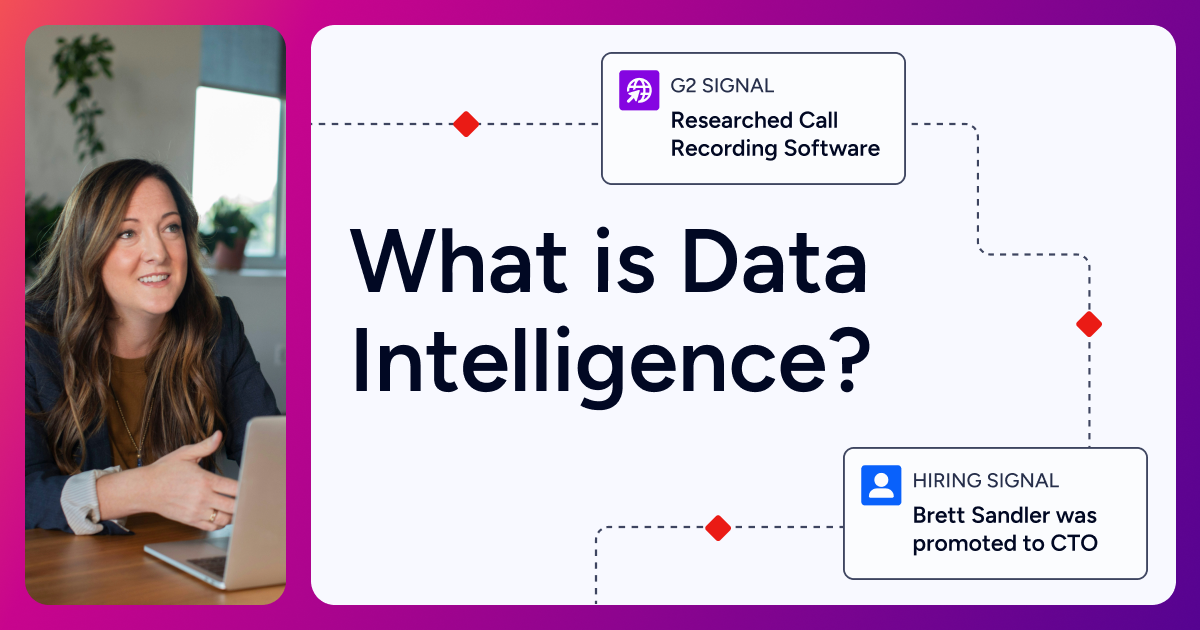Data intelligence is the process of transforming raw data into meaningful, actionable insights that support informed decision-making, operational efficiency, and business growth.
It encompasses several core disciplines and practices:
These insights are typically delivered through visualization and reporting tools, enabling organizations to understand trends, identify opportunities, and act with confidence.
Data intelligence focuses on ensuring teams have the right information in the right context at the right time. By leveraging advanced technologies and predictive analytics, data intelligence enables businesses to move beyond simply storing information to actually understanding and using it.
Here’s more about what data intelligence is, how it works, and why it’s essential for any data-driven organization looking to stay competitive.
Why Data Intelligence Matters in Modern Business
Data intelligence isn’t optional. With so much raw information available, data intelligence can be the difference between being overwhelmed, struggling to survive, and truly thriving:
Data Overload: Go-to-market (GTM) teams are overwhelmed with data, reports, and spreadsheets, much of which is already outdated by the time it reaches them. Data intelligence platforms cut through the noise, focusing attention on patterns and metrics that actually matter.
Disconnected Systems: Most companies wrestle with multiple, often conflicting datasets. Data intelligence breaks down these artificial walls and creates a complete view of your business for the entire company, from senior leadership to frontline practitioners.
Siloed Teams: Without a strong, reliable data foundation, individual departments may operate like separate businesses with their own agendas. Data intelligence creates common ground for everyone, so all your teams can start making better decisions collectively, not individually.
Key Components of Data Intelligence
Data intelligence is the systematic approach to data collection, analysis, and decision-making. With clearly defined processes and the right technology to support them, you can maximize the value you get from your business data and start making informed decisions.
Building serious data intelligence means creating frameworks in which core disciplines work together seamlessly. These include:
How Data Intelligence Works: Technologies and Processes
Data intelligence is a methodical, customizable computational process. While specifics will vary from one company to another, data intelligence typically includes the following processes.
Data Collection and Integration
The process begins with gathering data from multiple internal and external sources, such as CRM systems, web traffic, sales platforms, and third-party databases. These datasets are integrated into a centralized repository, such as a data warehouse, to enable unified access and analysis.
Data Cleaning and Preparation
Once collected, the data is cleaned to remove inaccuracies, duplicates, and inconsistencies. This step also includes formatting and transforming the data to ensure compatibility across systems and analytical tools. High-quality data is essential for producing reliable insights.
Data Enrichment and Contextualization
Data is then enriched with additional attributes or contextual layers. This could involve appending demographic data to customer records, matching firmographic data to companies, or linking behavioral patterns to sales activity. Enrichment improves the relevance and depth of the resulting insights.
Analysis and Intelligence Generation
Using advanced analytics techniques, including statistical modeling, machine learning, predictive algorithms, and natural language processing, the system identifies trends, correlations, and outliers. These insights can reveal customer behaviors, market opportunities, or operational inefficiencies.
Visualization and Decision Support
Insights are presented through dashboards, reports, or embedded analytics tools that make the data accessible and digestible for business users. This allows stakeholders to monitor performance, test hypotheses, and make data-driven decisions with confidence.
Data Governance and Compliance
Throughout the process, data intelligence frameworks ensure compliance with privacy regulations such as GDPR or CCPA, enforce access controls, and maintain audit trails. Governance practices are essential for building trust and maintaining the integrity of the data.
The Business Benefits of Data Intelligence
Here’s how data intelligence delivers true business value across the company.
Smarter Go-To-Market Strategy
Businesses using predictive intelligence can identify high-potential leads among their most valuable customer profiles long before prospects even consider engaging with sales teams. They can personalize their messaging to each prospect and focus resources where they’ll generate the highest return based on recent behaviors, current business needs, and their likelihood of engagement.
Operational Efficiency
Data intelligence reveals bottlenecks, workflow inefficiencies, and opportunities for improvement across every aspect of a business. These insights can improve how resources are allocated and which tasks are automated, reducing waste and increasing output without driving up costs.
Data-Driven Culture & Decision-Making
Many companies still make decisions primarily on the opinions and intuition of senior leadership, rather than actual evidence. While institutional expertise can be invaluable, data intelligence creates corporate cultures in which decisions are based on facts and quantifiable data.
Regulatory Compliance and Risk Management
Using data intelligence can improve customer data privacy compliance through continuous monitoring and documentation. As the rate of change in business speeds up, regulatory compliance has become increasingly challenging, even for large enterprises. Rigorous data intelligence practices enable compliance professionals to make decisions based on reliable, accurate data.
How To Implement Data Intelligence in Your Organization
Ready to transform how your company uses data? Here’s how to make it happen:
Define Business Objectives and Use Cases: Start by identifying the business problems you want to solve. Focus on identifying measurable outcomes from specific, relevant use cases to ensure that progress can be accurately quantified.
Assess Data Readiness and Infrastructure: Once specific business objectives have been identified, the next step is to conduct a thorough evaluation of your business’ information infrastructure and data readiness. This evaluation should include analysis on data quality, integrations and interoperability, potential security and compliance vulnerabilities, and overall data hygiene.
Democratize Access and Train Teams: While data intelligence is a significant technical challenge, it should be seen and approached as more than another IT initiative, and instead viewed as a cultural shift across the entirety of the organization. During the implementation phase, develop plans with technical leadership to devise suitable onboarding initiatives for technical personnel and end-users to ensure all stakeholders fully understand how to fully leverage and maintain the new system and workflows.
Monitor, Measure, and Optimize: Data intelligence needs continuous refinement. Define data quality benchmarks and introduce regular review periods to ensure that standards are adhered to, business goals are being met, and potential efficiencies are identified.
How ZoomInfo Powers Data Intelligence
ZoomInfo is transforming how B2B companies approach data management for effective GTM strategies:
Data Intelligence as a Strategic Asset
Companies that use their data for strategic intelligence have a critical advantage in terms of lead quality, customer retention, and overall efficiency. From healthcare to tech to hospitality, our data intelligence is revolutionizing how businesses operate across every industry and vertical.
ZoomInfo’s Go-to-Market Intelligence Platform helps businesses prioritize high-potential markets and identify the true scope of their total addressable market, focus outreach efforts on high-value prospects, and streamline lead flow. Whether you’re prospecting, launching campaigns, growing existing customers or scaling revenue operations, ZoomInfo helps you sell smarter and win faster.


